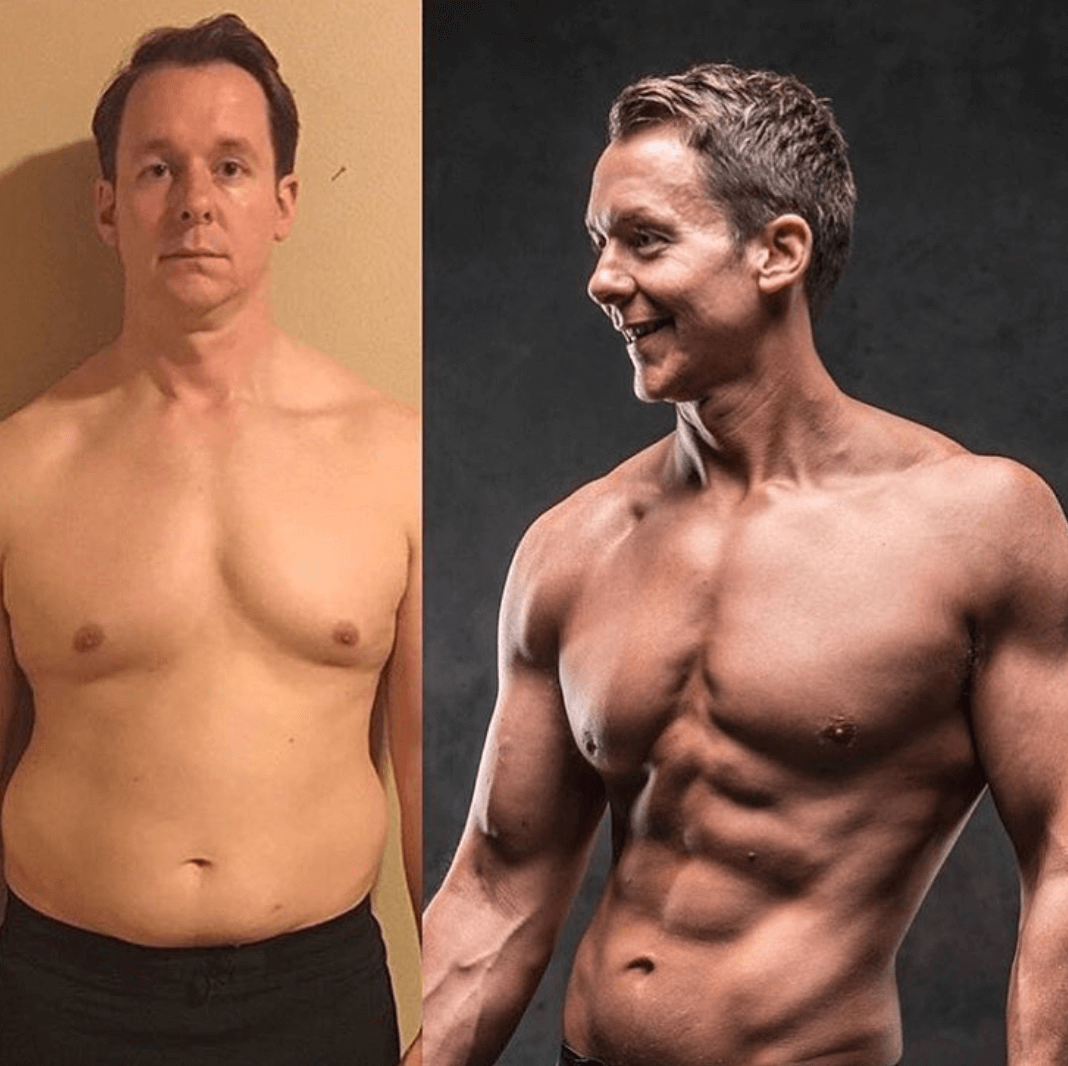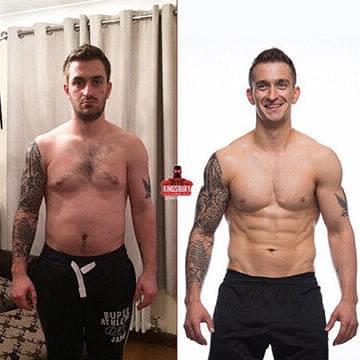Thanks for the great response to the Ask David Instagram post last week!
This week we cover –
tomspafford@teamkingsbury – No matter how well I eat my macros, I am struggling to get down to a a body fat to show my abs! Any tips?
rashedanani – How do you maintain size with HIIT workouts like kickboxing and Jiu Jitsu
markgmcdermott – I’m an older trainer who has been training for many years and am in decent shape but how do I lose that last bit of tummy fat? ????
burningfat_buildingmuscle – Not including your clients…who do you think had the best body transformation in Hollywood? E.g. Edward Norton, Tom Hardy, Christian Bale, Chris Pratt, etc.?
tboeckjacob@teamkingsbury – I’ve been struggling to get good motivation for starting to get back into working out, what helps you get or stay motivated? Thanks!
mandaduley – How do you avoid overtraining (or can you even over train) a muscle group if you’re mixing strength training with HIIT (using either body weight, dumbbells, or light t-bar weights)? Perhaps this is why a customised plan is soooo important?
nice.shot@teamkingsbury how do I stop the DOMS!!! L
Check out the video of my answers!
Here is the video transcript as well:
David: Hi, it’s David Kingsbury here, we’re at the HQ Pinewood Studios. Recently we put out a post on instagram asking if any of you have any fitness questions you’d like me to answer. It’s taken a little bit of time, we’ve been super busy but here we go, I’m going to answer them. Right, let’s just get straight into it.
Question: No matter how I eat my macros I’m struggling to get down to a body fat to show my abs. Any tips?
David: Okay, so first up, let’s just explain this. So if you’re following your macros you should be making progress, basically. So, my first thought would be perhaps your macros have not been calculated correctly and therefore you’re consuming too many calories. Your macros need to track and your calories need to track as you progress through your training, as your body changes, as your weight changes, these things will also need to shift with it. So, I would say it would be worth having someone look at your macros again and make sure they are on point because if you are following them accurately then you will continue to lose body fat.
The other aspect of this is just time. So, losing large amounts of body fat doesn’t happen quickly. Therefore patience might just be something you have to think about here. How long have you been doing this for? Have you been doing this for long enough to see these kind of results? If the answer is yes, then go back and look at your macros. If the answer is no, then basically just keep working. Keep doing what you’re doing, keeping your calories, keeping your macros. Hope that helps.
Next question please?
Question: How do you maintain size while doing workouts such as kickboxing and jujitsu?
David: Maintaining size. Okay, so if you’re doing those kind of workouts you’re going to be burning through quite a lot of calories. Also you’re not necessarily going to be stimulating your muscles sufficiently for them to maintain. So, the 2 key things to look out would be making sure you’re eating enough calories and protein so you can maintain muscle mass. I’d also say you’ve got to be incorporating some heavy resistance training, some weight training just to have that stimulus for your body to maintain muscle. If you don’t stimulate it to do that then it’s got no reason to maintain it. So you want to be eating plenty of protein, getting enough calories in so you’re not in a calorie deficit at any time and then also including some heavy weight training to stimulate muscle maintenance essentially. Nice simple answers there but it really is calories in versus calories out and training stimulus. Hope that helps you out.
Next up?
Question: I’ve been training for many years and in decent shape but how do I lose that last little bit of tummy fat?
David: Okay so this sort of leads on from the question about dropping body fat. Again, so you want to be looking at your calories and your macros and make sure that they are correct for your goals and you need to be working consistently for a duration on these. So, you have to kind of nail that side of things down first and foremost. If you feel that that side of things is completely under control and you’re still not seeing definition through the abs, perhaps you’re very lean everywhere else, it’s just around that area then there are other things you can look at. So, making sure you’re managing your insulin levels, that you’re managing carbohydrates well, that your body is working efficiently when you’re consuming carbohydrates, okay, because a lot of people, if they are having too many simple carbohydrates it can have a really negative effect on blood sugar levels with insulin spikes and causing fat storage.
So, there’s a couple of techniques you can use for that to help manage that. Carb cycling is a really useful one. So, essentially you’d be having carbohydrates on training days or higher levels of carbohydrates on training days and then on non-training days you’re keeping the carbohydrates a little bit lower. Another thing you can look at are your cortisol levels. Cortisol is a hormone that can be responsible for fat storage around the mid-section. So, you want to be making sure that you’re getting plenty of sleep. At least 8 hours is ideal. And then also managing stress to the best of your ability. So, stress causes a release in cortisol so anything you can do to manage stress will certainly help. But first and foremost, like the other person that asked about macros or that side of things, they are the areas you need to get figured out first and foremost. So, how many calories do you need to be eating a day. What is the right breakdown of macros for your body type for your goals, for your lifestyle and then stick with that for a certain amount of time. Hope that helps.
Next up?
Question: Not including your clients, who do you think has the best body transformation in Hollywood?
David: Okay so, you obviously know that I’ve trained a lot of people with some pretty serious body transformations in Hollywood. Someone I kind of look up to in that sense is Matthew McConaughey. I think that the way that he changes his body for roles, I think is really impressive. From my point of view, I don’t always change people to make them look better within the film industry. A lot of the time I’m changing them to drop weight to look worse, to look like they are starving, these kinds of things. There are a lot of elements to it and I know that that side of things, the challenge is much greater than making someone look pleasing to the eye. He kind of encompasses both sides of things which is really impressive. So, yeah, McConaughey.
Next up?
Question: I’ve been struggling to get good motivation for starting to get back into working out. What helps you stay motivated?
David: Not stopping. So, straight away in that you said that you’re looking to get back into it. I find that whenever someone takes a lengthy break from exercise, the thought of starting again is really quite daunting so I would say just make it part of your routine. For me, that’s why it comes quite easily to me is because it’s been part of my routine for 10/15 years. I don’t feel I require motivation to train, it’s just something I do. It’s been part of my life for such a long time that I never would wake up and think, “You know what, I don’t fancy training today.” It just doesn’t happen. And if it does, it’s incredibly rare and I will just take that day off. So, my advice for this would be to really just try and make training a part of your lifestyle and part of your routine. The longer you do it for, the more it becomes part of your life, the easier it all becomes. So, that would be my kind of long term plan for you.
Short term, training partner helps massively. So, having someone you can train with is really important and also having a coach. There is accountability where you kind of check in with someone weekly or have someone you do a personal training with weekly and they can keep you on track and keep you motivated. Yeah, so those are my main pointers. So, long term – lifestyle; short term – get some help from the people around you. Hope that helps?
Next up?
Question: How do you avoid overtraining or can you even overtrain a muscle group.
David: Yes, so avoiding overtraining is quite easy, really. You just don’t train muscle groups too frequently and you make sure you’re recovering sufficiently. The easiest ways of reducing the likelihood of overtraining is by doing split routines. For example where you’re training muscle groups not on consecutive days. So, you’re not going to train chest 3 days in a row, for example anything like that. It’s about organising your training. It’s about designing your training in advance so you know what you’re doing in the gym but also you know exactly what you’re doing outside of the gym. So, when are your rest days; what are you doing in your rest days for recovery; how are you splitting up your week in terms of sessions; the format of those sessions to make sure that you’re not going to be at risk of overtraining. One of the largest risks of overtraining is injury, so it is really important to just plan your week effectively. And for most people the actual amount of work that they need to do to get a result is less than they might think. So, if you’re worried about overtraining, chances are you might already be doing too much. I don’t mean too much in terms of sets and reps, you might be working that body part too much for example. So, you want to strip it back, work through the basics, do them really well and that’s where the results come.
Hope that helps.
Question: How do I stop the DOMS?
David: How do you stop DOMS? It would be nice if they didn’t exist. Some people love them, other people hate them. Some people feel that they haven’t done a workout if they don’t have DOMS. I’m not in that camp. I prefer some mild DOMS just to remind me that I’ve worked out but nothing too major. I would say avoiding DOMS is not something you necessarily what you want to do in terms of that DOMS are a by-product of exercise and of the kind of exercise we’re looking to do and the kind of results you’re looking to achieve, DOMS are going to be a part of this.
For people that don’t know what DOMS is, it’s Delayed Onset Muscle Soreness. So, it’s that soreness you may well feel in your muscles a day or two days after exercise. It is part of that process. It’s your body recovering from the training sessions essentially. It’s the damage that you’ve done during the training sessions but that damage is important for growth.
In terms of making DOMS manageable, I would say exercise variety is something you need to look at. So, you’ll always get much worse DOMS if you’re doing something that’s brand new because you’re body is not used to those movement patterns and you may not have worked the muscles in that way before. So, too much exercise variety can have a negative impact in that sense. So, one thing you might want to look at if you’re really struggling with DOMS is following a more consistent training plan and having less variety but having more consistency with your training. So, have a set of workouts that you can follow week after week after week, and use those to improve on them rather than just making up sessions, adding new exercises and focusing on variety. Just focus on progression on the basics and you will get less muscle soreness from that. So, I hope that helps you out.
Thank you very much for your time, watching the video today. We’re going to be putting out another post on social media today so if you have any questions at all, please feel free to send them over, I would love to help you out and answer them. Until next time, I’ll speak to you soon. Bye bye.
If you have any more questions, please let me know. This can be a tough time for fitness through Christmas and the New Year so anything I can do to help just let me know!
Â
Â










